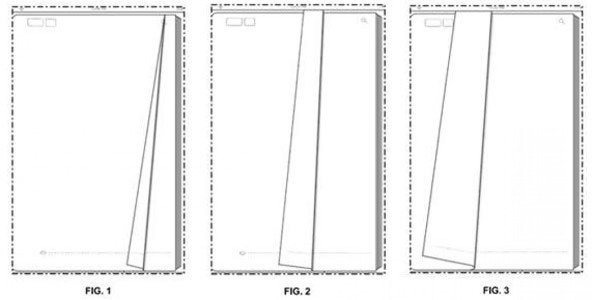Apple Patents The Page Turn
Patent first filed in 2011 under the name "Display screen or portion thereof with animated graphical interface."

Apple (Nasdaq: AAPL) is now the official owner of a design patent for page-turning on its e-reading devices. The patent adds to a long list of Apple's patents for what many view as commonplace features in digital media and devices.
First filed in 2011, the patent titled “Display screen or portion thereof with animated graphical user interface” was granted to Apple by the United States Patent Office this week. The patent claims three inventors for page-turning: Elizabeth Caroline Cranfill, Stephen Lemay and Mikio Inose.
To highlight the specifics of the feature, the document offered three illustrations: In the first, the corner of a virtual page is slightly peeled back, while in the second the page is turned halfway to the next. Finally in the third image, the page is almost completely turned over.
As a “graphical user interface,” the patent illustration depicts a standard act that has existed in physical form as long as there have been books. But Apple managed to successfully argue that its page-turning animation is original, and that competing page-turning applications have been unable to recreate its effect.
Despite being nearly universally acclaimed for the design of its wide range of computer devices, including smartphones, tablets, laptops and desktops, Apple has become increasingly controversial for its aggressive patenting of many seemingly basic or ubiquitous software and hardware features -- a trend that’s only been exacerbated by the Culpertino, Calif.-based developer's rise to fame as a corporate and cultural icon.
Just three months ago, Apple unseated arch-rival Microsoft (Nasdaq: MSFT) to become the most valuable company in history (in terms of aggregate market capitalization) when its shares soared above $660 a piece.
This commercial dominance has been mirrored by a number of patents on many near-universal cultural icons like the musical note (patented for its iTunes music software) and staircases (the glass stairs used in Apple stores). For its flagship mobile devices, the iPhone and iPad, the company has patented everything from the iPhone’s packaging to the “rounded corners” of the iPad -- one of the key features over which Apple sued rival tech firm Samsung (LON: BC94) in a recent landmark case, which Apple won.
It is unclear how the new patent will impact other major mobile hardware developers or other popular e-readers such as Amazon’s (Nasdaq: AMZN) Kindle or Barnes & Noble’s (NYSE: BKS) Nook, but Apple has taken many of its rivals to task for similar intellectual property disputes.
Last month, Apple won a long and bitter patent lawsuit against Samsung. Despite being awarded $1 billion in restitution, this week the company began to press for legal action anew, going after Samsung products released after that court ruling in October.
The company also settled a different patent case with the mobile hardware developer HTC Corp. (Taiwan: 2498) by entering into a 10-year cross-licensing deal for all current and future patents from both companies. While the terms of the settlement were left private, HTC is expected to pay Apple $6 to $8 for every Android handset it sells, according to CNN.
Despite its ongoing conquest of the U.S. patent field, Apple has struggled to retain its market dominance since its all-time high in August. Earlier this month, the company’s stock dropped more than 20 percent, placing the tech giant in bearish territory. Android phones also claimed 75 percent of the global market share in smartphones for the third quarter this year, according to a report from the research firm IDC.
Along with the page-turning patent, Apple also had patents approved for “Skin tone aware color boost for cameras,” “Location-based categorical information services” and a “Consistent backup of electronic information.”
Apple shares jumped just over 2 percent on Friday, closing at $527.68.
© Copyright IBTimes 2024. All rights reserved.






















